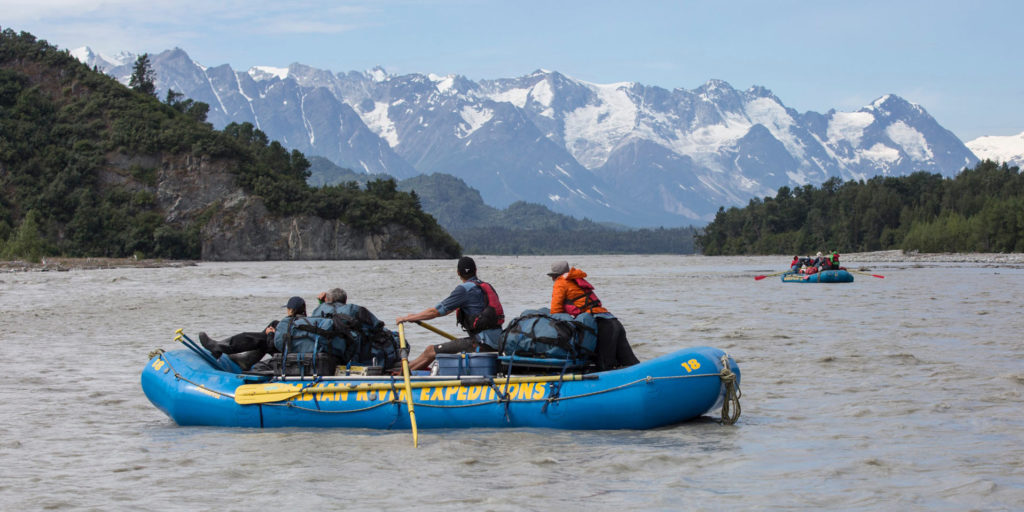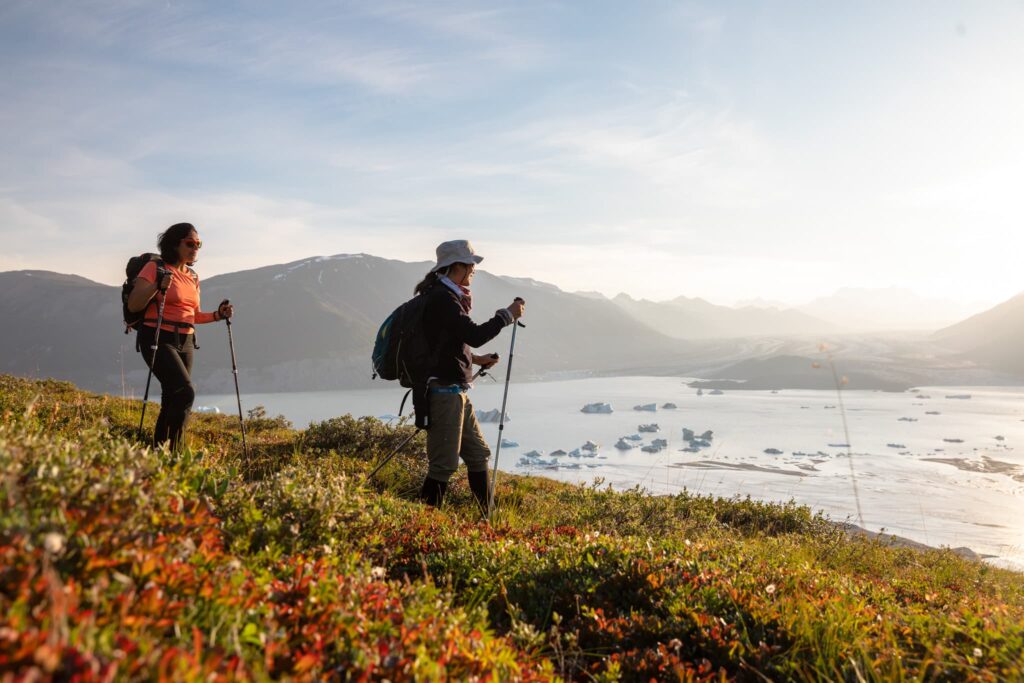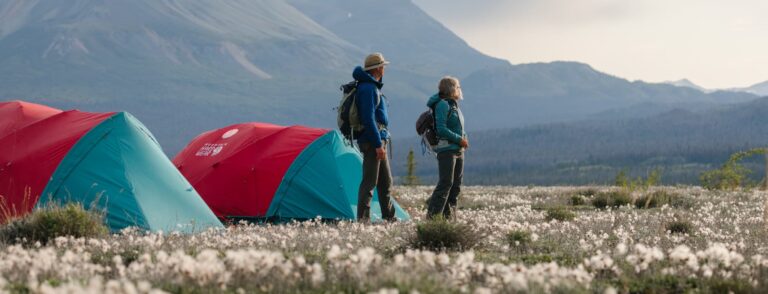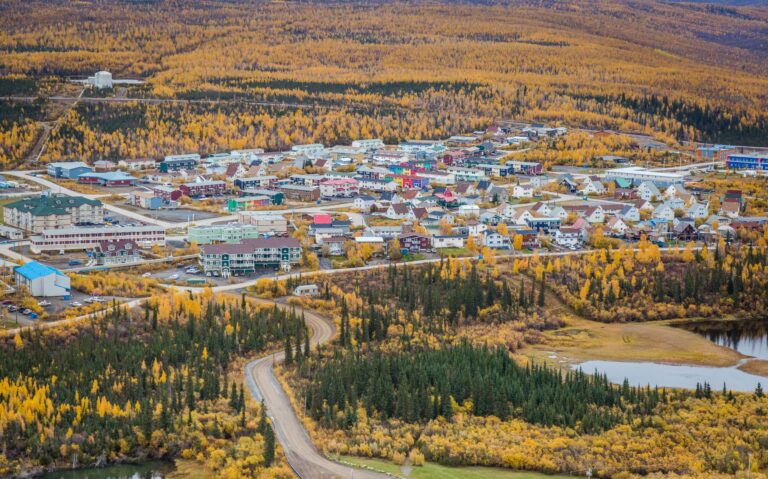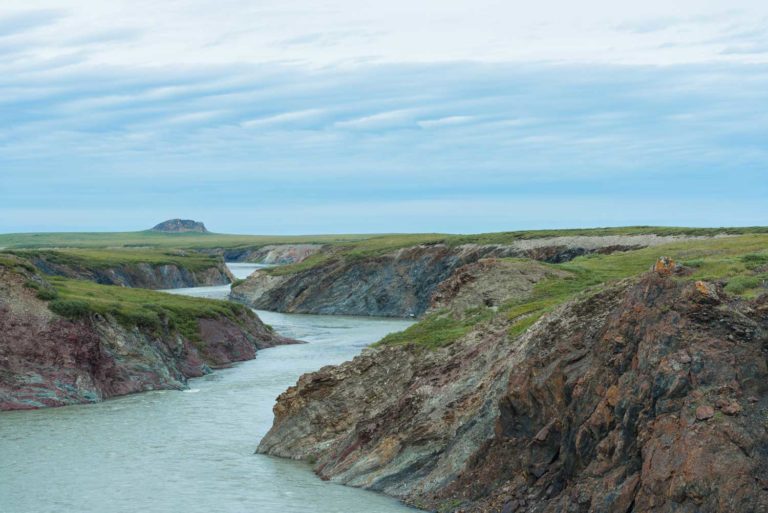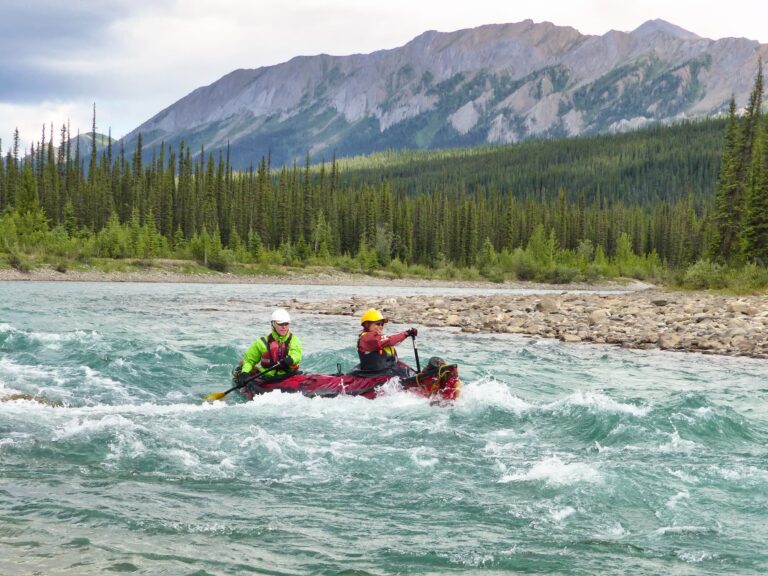It can be a little daunting knowing what to pack for your first trip to the wild North, but don’t worry! With the correct preparation, packing the right clothing and gear will ensure you get the most out of your adventure of a lifetime on the river.
In this guide we’ll walk you through everything you need to know about packing for your expedition with Nahanni River Adventures & Canadian River Expeditions. Whether you are a first time river traveler or experienced wilderness explorer, our tips and tricks will ensure you have a safe and enjoyable trip.
Waterproof your Packing for the River
Before you decide what to bring on your river trip, the right waterproof protection is essential to ensure your clothing and equipment remain dry and functional. We will provide you with the essential dry bags you will need for your trip so you can relax in the knowledge that your belongings will remain safe and dry.
We provide:
- a large, waterproof river bag (115L / 30 gal.) – used to hold your personal gear and protect it on the river
- a smaller water proof bag (20L / 5 gal.) – used as a day bag for quick access to items you may need during the day such as a water bottle, snacks, sunscreen and an extra layer.
You will receive these bags at your pre-trip departure meeting, after which you can transfer your personal gear from your travel suitcase or duffel bag.
How to Organise your Gear for the River
To make packing easier and organize items inside the large waterproof bag, we recommend lightweight dry bags such as this example by Sea to Summit.
Top Tip! Having dry bags of a variety of colours and sizes makes it easier to sort and identify your clothing, sleeping gear and toiletries when in camp!
Extra protection for smaller items
Ziplock bags are excellent for storing important items such as passports, phones, wallets, or personal hygiene items. These provide an inexpensive and effective way to add an extra layer of protection from moisture.
How to Protect Your Electronics on the River
If you have a camera or other valuable electronics we strongly recommend you bring a waterproof camera bag or case that can be found at your local camera store.
We rent Pelican cases (1200 model, measuring 9 x 7 x 4 inches inside), a durable piece of technology designed for backcountry expeditions.
For our top recommendations for charging solutions on the river, check out our blog post Electronics in the Backcountry.
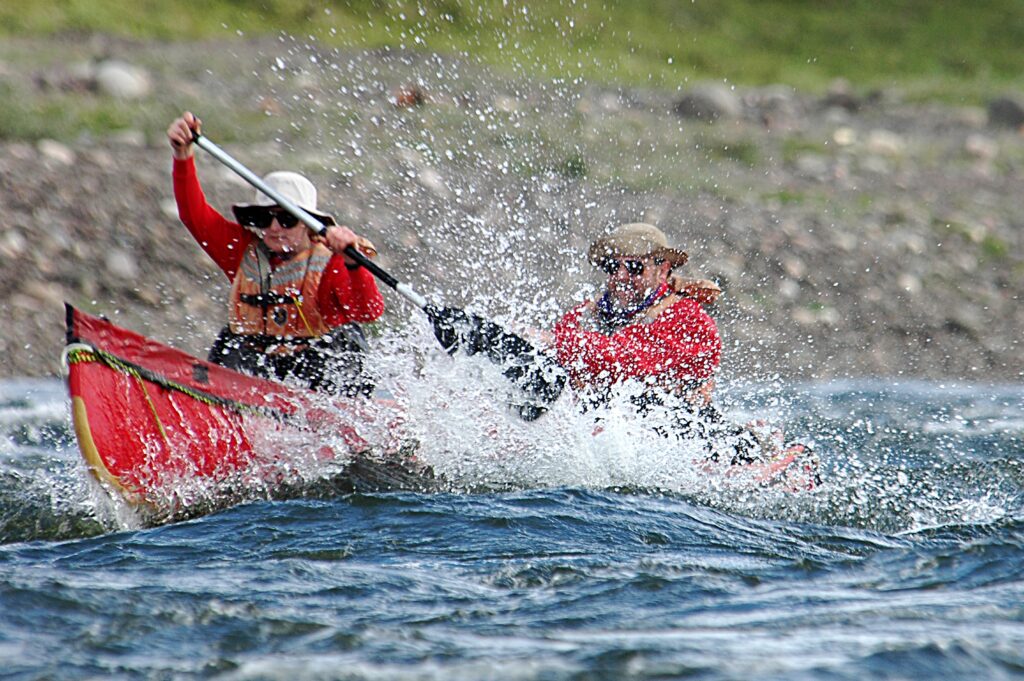
Prepare for Northern Weather: Clothing Tips for your Wilderness River Trip
Weather conditions in northern environments range widely between extremes. When the only fact you can bet on is that it can change instantly, being prepared is crucial. On any given day you may experience sunny, hot, dry weather that is interrupted by periods of rain or on rare occasions even snow!
Our Tatshenshini and Alsek River expeditions in particular tend to experience wetter conditions as we approach the Alaskan coastline.
For Tundra river trips, please refer to the specific notes in our packing list.
In general, having a variety of clothing is best; By layering your clothing you’ll have an option for all weather conditions, ensuring you can stay comfortable throughout the day.
Here are a few key items to bring:
- Lightweight hiking pants and long sleeve sun shirts for hotter, sunnier days
- Merino base layers and fleece mid layers for cooler days
- Waterproof gear (see below)
- A down puffer jacket – an indispensable item which takes up little room!
- A toque and a pair of wool or fleece mitts
Wool, fleece or polypropylene layers are best for warmth and weight. Avoid denim or cotton as these fabrics become cold and heavy when wet.
Remember, you might not wear all of the items you pack, but it’s better to be safe than sorry!
Rain Gear
For our raft guests, we will provide you with a Helly Hansen rubberized rain jacket and pants. This is heavy duty rain gear perfect for keeping you dry in the raft on wetter days.
We highly recommend you pack your own light weight, breathable rain gear (eg Goretex) as well for hikes!
In any given summer, we usually hear the following equipment feedback:
- From guests on a good weather trip: “Why did you tell us to bring along all the warm clothing we didn’t use?”
- From guests who followed our list on a trip with some cold weather: “Thanks for having us prepared by giving us such detailed instructions on what to bring!”
- From guests who did not follow our list on a trip with some cold weather: “I was cold!”
Understanding the fabrics
Here are some terms and fabric types to help you choose the right gear for your trip:
- Water proof— the quality of a sealed fabric that does not allow moisture to pass through. Condensation from sweating is controlled by venting through zippers.
- Gore-tex—a laminated fabric manufactured to be water repellent and breathable. The waterproof qualities may be compromised if the fabric becomes soiled or abraded by pack straps. (Use for wind and light shower gear.)
- Polypropylene—a lightweight synthetic fabric that transfers moisture away from your skin. Brand names include Lifa, Wickers, Odlo, Patagonia and others. (Used for long underwear)
- Fleece & Pile—a polyester fabric that is lightweight and soft. It is warmer than wool per pound, insulates even when wet, and dries quickly. It is also referred to as fleece, Polarplus and Synchilla. (Used for outerwear.)
- Icebreaker Wool—a brand that has all but eliminated the “itch factor”.
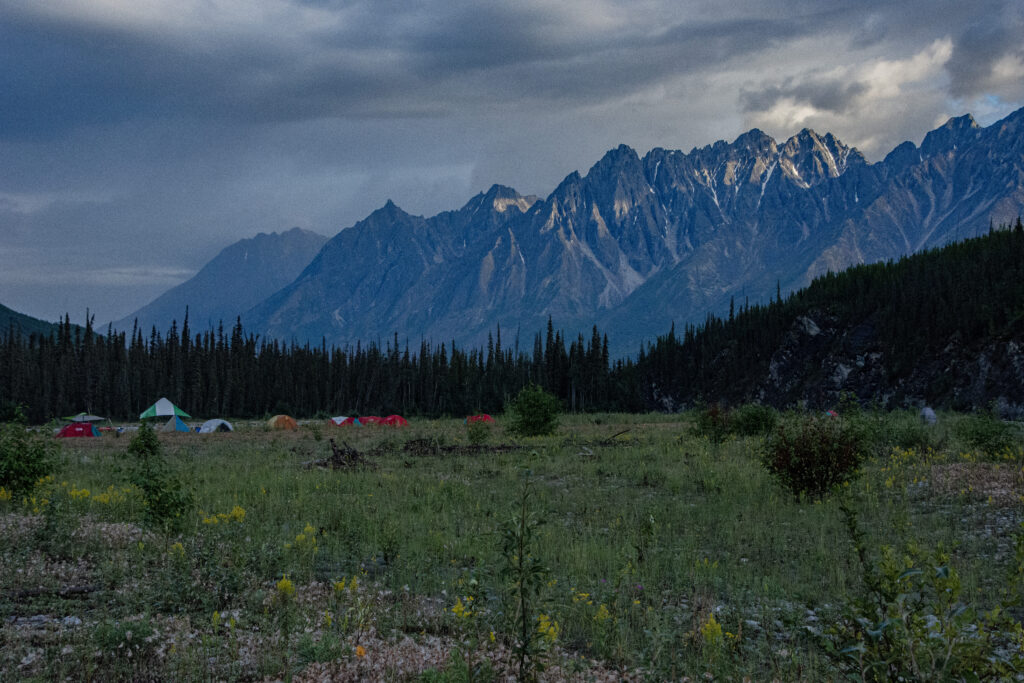
Footwear for Northern Rivers
For our raft guests: we provide durable rubber boots – these are perfect for wearing on river days to keep your feet warm and dry when getting into and out of the raft!
Felt insoles will keep your feet well insulated if you frequently suffer from cold feet – bring a couple of pairs so you can rotate them if they get wet!
For canoeists: we recommend neoprene booties or combinations of neoprene socks and sturdy shoes (eg Keen sandals).
A great tip from our guides if you use neoprene booties or gloves, is to drip a teaspoon of hot water in each one in the morning. Shake and test with your finger. Then put them on and luxuriate in the warmth!
For hiking (canoe and raft trips): A good pair of hiking boots with ankle support is a must for those wanting to hike! Be sure that they are broken in before the trip to minimise chances of blisters.
For a full overview, check out Our Ultimate Guide to Footwear on the River.
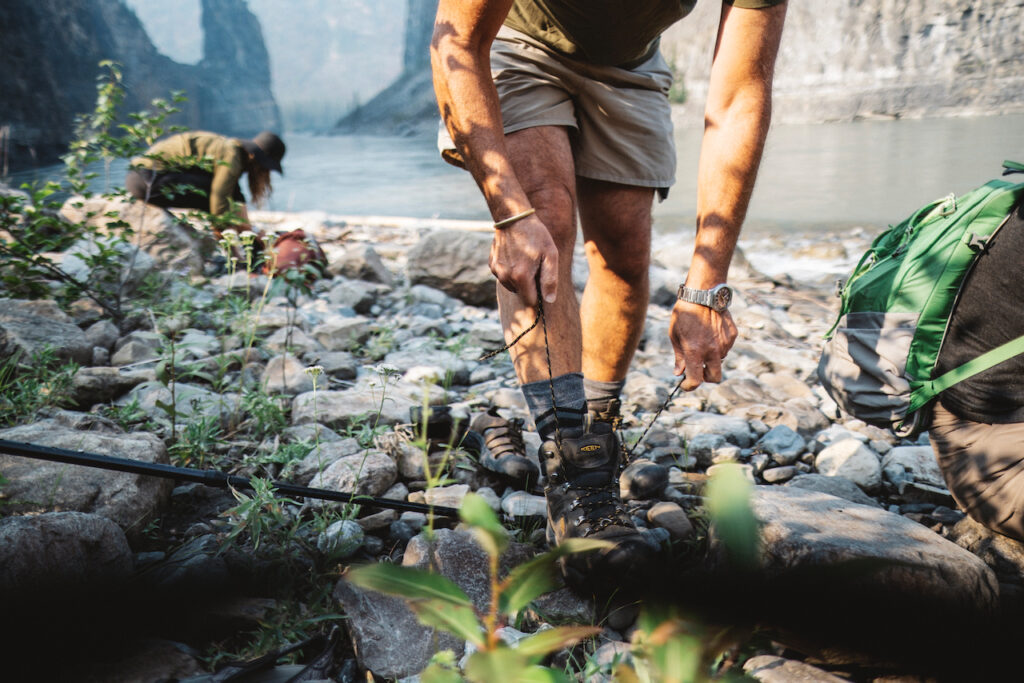
Preparing for Mosquitoes on the River
Mosquito populations vary according to factors such as temperature, rainfall, and wind. Campsites are carefully chosen to minimise exposure to these pesky critters, however sometimes we encounter more than anticipated.
Here are a few key items to pack to protect yourself from mosquitoes during your northern river trip:
- Mosquito repellent – A high quality, DEET-based repellent works best.
- Head net – A lightweight, portable option which fits in a pocket and offers protection when you unexpectedly run into bugs.
- Bug Jacket – An essential packing item for our Firth, Horton and Coppermine River trips, providing full upper body protection. We recommend The Original Bug Shirt.
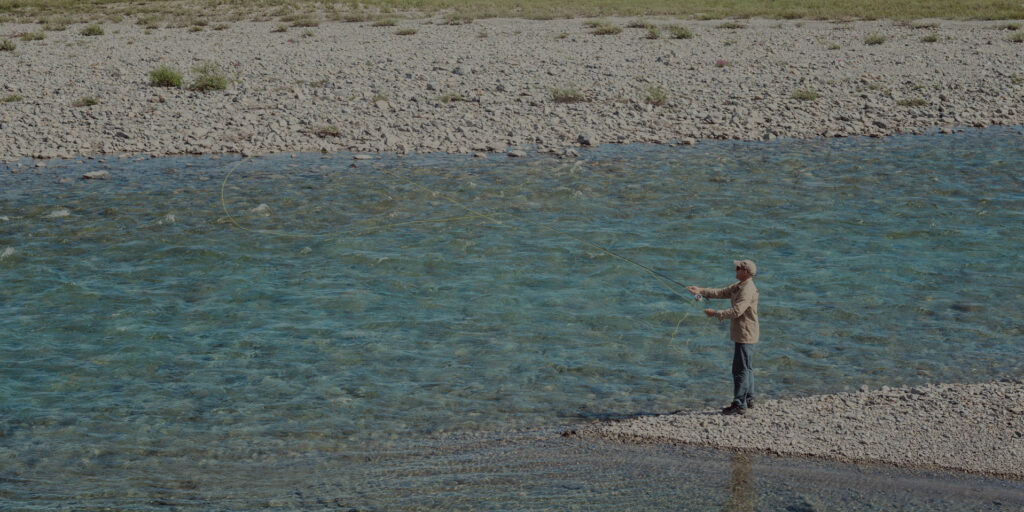
Consider Bringing Fishing Gear
For many of our guests, fishing is the highlight of our wilderness river expeditions! Frequented by fewer visitors than their southerly counterparts, the pristine rivers of the North boast vibrant aquatic life unparalleled in other ecosystems. Set against the backdrop of untouched wilderness, our river expeditions promise a fishing experience like no other!
Species to expect:
- The Firth, Coppermine and Horton Rivers are famous for Arctic Char, a succulent fish not dissimilar to salmon in texture and appearance.
- The Nahanni boasts populations of Dolly Varden, Lake Trout, Arctic Grayling and Northern Pike.
Fishing Gear: What to Bring
When preparing your fishing gear for a northern river expedition, the goal is to pack compact and lightweight equipment that is easy to transport and won’t weigh you down. Here’s what we recommend:
- Compact Tackle: Choose travel-sized tackle boxes to keep your gear organized without taking up too much space.
- Collapsible Rods: These are ideal as they’re lightweight and durable, reducing the risk of accidental damage.
- Spinning Gear and Fly Rods:
- For Grayling, Dolly Varden, and smaller Bull and Lake Trout: A lightweight spinning rod or a 4-6 weight fly rod should suffice.
- For Northern Pike, Inconnu, and Salmon: You’ll need a mid-weight spinning rod (with a strong reel) or a 7-8 weight fly rod for these larger, more powerful fish.
- Important: Northern Pike have sharp teeth, so be sure to use a steel leader to prevent the line from snapping.
Fishing Licenses
Fishing licenses for Nahanni National Park are available in Fort Simpson, and in Inuvik for Ivavvik National Park. We will provide more information on how to purchase these once you book your trip.
Watch our helpful video here:
Questions?
We provide each of our guests with a comprehensive Details & Packing List. Feel free to ask for another copy if you can’t find yours!
As always, do not hesitate to reach out to our friendly Expedition Planning Team if you have any questions about any of the above. We are here to support you at each stage of the journey and look forward to welcoming you to the Wild North!



